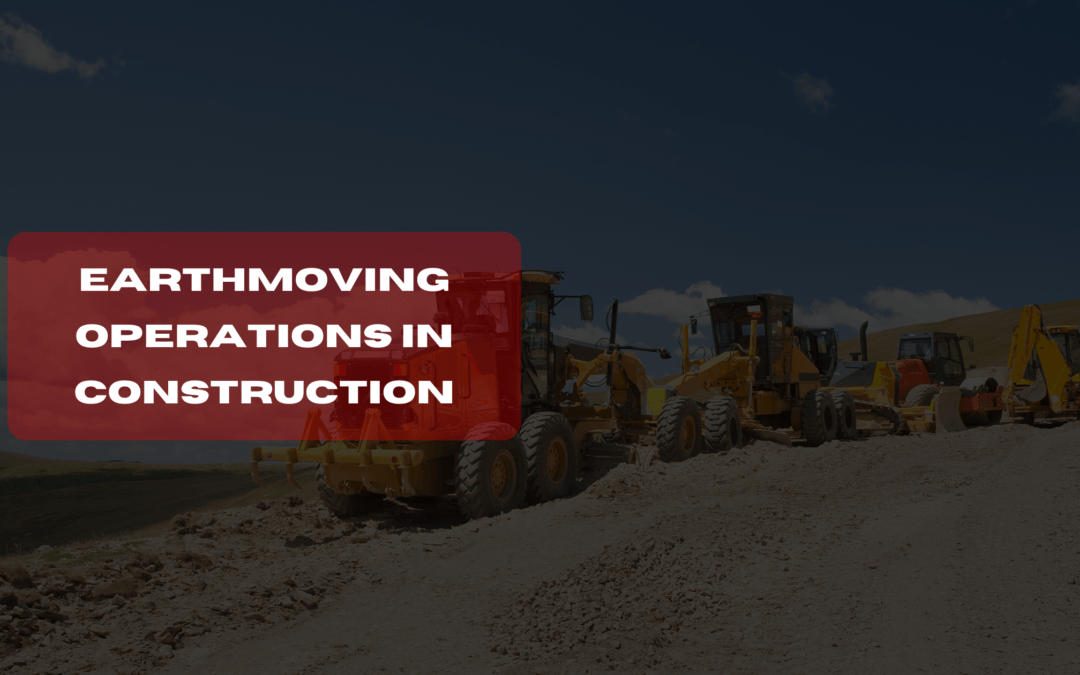Unearthing Success: The Art of Earthmoving Operations in Construction
When it comes to constructing the world around us, there’s a vital process that often takes center stage—earthmoving operations. These operations are the first steps in creating a stable and secure foundation for any construction project, from building towering skyscrapers to crafting intricate highway systems. In this comprehensive guide, we’ll unearth the key steps involved in earthmoving operations and introduce you to the earthmoving equipment that makes it all possible.
Table of Contents
The Significance of Earthmoving Operations
“In construction, there is no single blueprint for success, but there is always a strong foundation.”
Before we dig into the nitty-gritty of earthmoving, it’s essential to understand why these operations matter so much. Properly executed earthmoving sets the stage for everything that follows:
- Increased Stability: Earthmoving ensures that the ground beneath a structure is stable, reducing the risk of settling or shifting over time.
- Safe and Clear Environment: Clearing vegetation and debris creates a safe, unobstructed space for construction activities and helps protect the environment.
- Efficient Water Management: Proper grading and shaping of the terrain ensure effective water drainage, preventing water-related issues in the future.
- Reduced Swelling and Shrinkage: Earthmoving helps mitigate soil swelling when wet and shrinkage when dry, preventing damage to structures.
Key Steps in Earthmoving Operations
Step 1: Surveying and Site Preparation
Importance: Surveying is the bedrock of earthmoving operations. It provides critical information about the construction site’s topography, existing structures, and soil conditions. Without accurate survey data, construction plans can easily go awry.
Process:
- Surveyors use sophisticated equipment like total stations and GPS to measure elevations, distances, and angles.
- The data collected during surveying is used to create site plans and maps, serving as the blueprint for the project.
Step 2: Clearing Vegetation and Debris
Importance: Clearing the construction site of vegetation, trees, and debris is like creating a blank canvas. It’s the first step in transforming the landscape.
Process:
- Heavy machinery such as bulldozers and excavators is deployed to clear the site.
- Trees, shrubs, and obstacles are removed, ensuring a clean slate for construction.
Step 3: Excavation and Soil Removal
Importance: Excavation is the act of digging into the earth to create trenches, foundations, basements, or other required features. It’s the groundwork for building anything substantial.
Process:
- Excavation equipment, including backhoes and excavators, is used to remove soil and, in some cases, rock.
- The excavated material may be transported away or stockpiled for later use.
Step 4: Shaping and Grading the Terrain
Importance: Shaping and grading the terrain is all about sculpting the land to meet the project’s specifications. It’s like creating the canvas on which the masterpiece will be painted.
Process:
- Motor graders and bulldozers are the go-to machines for shaping and grading.
- They level surfaces, create slopes, and ensure the terrain conforms to the desired specifications.
Step 5: Compaction and Stabilization of the Soil
Importance: Compaction is the final touch that ensures the soil is dense and stable. Stabilization may be required for certain soil types to enhance their properties.
Process:
- Compaction equipment like vibratory rollers and plate compactors are used to compress the soil to the required density.
- Stabilization techniques, such as adding cement or lime, can be employed to enhance the soil’s strength and stability.
Earthmoving Equipment: The Workhorses of Construction
Now that we’ve unearthed the key steps in earthmoving operations, let’s meet the machinery that gets the job done. These are the workhorses of construction, each designed for specific tasks and applications.
Bulldozers
- Application: Bulldozers are versatile and ideal for pushing and moving large quantities of soil, debris, or other materials.
Excavators
- Application: Excavators are like the Swiss Army knives of earthmoving, used for digging, trenching, and material handling.
Loaders
- Application: Front-end loaders excel at loading materials like soil, gravel, or debris into trucks or transport equipment.
Motor Graders
- Application: Motor graders are precision instruments for grading and leveling surfaces, ensuring they meet the desired specifications.
Scrapers
- Application: Scrapers are designed for moving large volumes of earth over shorter distances, often used in large-scale earthwork projects.
Earth Movers
- Application: These specialized machines are heavy lifters, moving massive quantities of materials efficiently, commonly found in mining and large-scale earthwork projects.
Building the Foundation
As we wrap up our exploration of earthmoving operations, remember that this is just the beginning. Earthmoving sets the stage for construction, providing the stable foundation upon which remarkable structures stand. The next time you see a towering skyscraper or drive on a smooth highway, you’ll know that it all started with the art of earthmoving.
In the words of John Ruskin, “When we build, let us think that we build forever.” And when we build forever, we build on the firm foundation laid by the art of earthmoving.
Note: This article serves as a comprehensive guide to earthmoving operations and equipment. Always consult with qualified professionals for precise guidance and recommendations based on your specific construction project.

